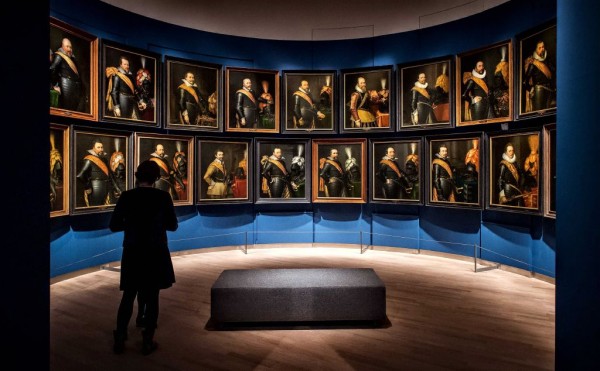For centuries many have pondered what lies behind the Mona Lisa’s enigmatic smile, but it was more of a rhetorical question. Now art lovers can literally discover what the back of Da Vinci’s masterpiece looks like.
In a unique and quirky Dutch exhibition, Brazilian artist Vik Muniz displays about 15 painstakingly recreated exact reproductions of the backs of some of the world’s most famous paintings.
There’s Vincent Van Gogh’s “Starry Night” and Vermeer’s “The Girl with a Pearl Earring.” A massive, almost bare, wooden frame is the stark reverse side of Rembrandt’s haunting “The Anatomy Lesson of DrNicolaesTulp,” reports AFP.
Visitors to the exhibition at the Mauritshuis museum in The Hague could be forgiven for thinking they have accidentally wandered into a storage room, but a closer look reveals a fascinating trip into the history of each painting, who owned it and where it travelled, as well as changing tastes in art conservation.
On his first museum visit as a schoolboyto The Museum of Art of Sao Paulo, Muniz was instantly intrigued not by the artworks, but by the mechanics and artistry of their backs.
As “an 8-year-old I wasn’t very interested in paintings. I was very fascinated that all the paintings from the back, they looked like machines, contraptions,” Muniz told AFP.
“And in fact they serve a purpose. They are instruments for preserving history.”
It took six years of negotiations with the Louvre in Paris to be able to study the back of “The Mona Lisa” painting.
The “Vik Muniz: Verso” exhibition, opened last Thursday and runs until September 4.
It draws the visitor back through the centuries, forcing them to peer closely at what are more usually neglected parts of an artwork.
Priceless Cultural Heritage
“Joconde” is scrawled in a faded black flourish on the back of “The Mona Lisa,” close to arrows pointing up to show which is the top. A small red triangle painted on the backs of the Dutch masters is a sign that in war time they are part of a priceless cultural heritage which must be saved first.
A bevy of stickers from the world’s top museums, The Tate Gallery, the Center Georges Pompidou and the Guggenheim, traces the exhibitions which “The Smokers” by Fernand Leger painted in 1911-1912 has been part of.
“The front of the painting tells of the intention of preserving a moment forever,” Muniz said. The image is supposed to last exactly the way it is for millennia to come.
“The back of the painting tells the story of changing. It’s where the painting has been.”
The Mauritshuis gave Muniz -- renowned for his eclectic artworks often in unusual medium such as chocolate, rubbish or sugar -- unparalleled access to its most iconic works from the Dutch Golden Age and he and his team have created five new reproductions.


